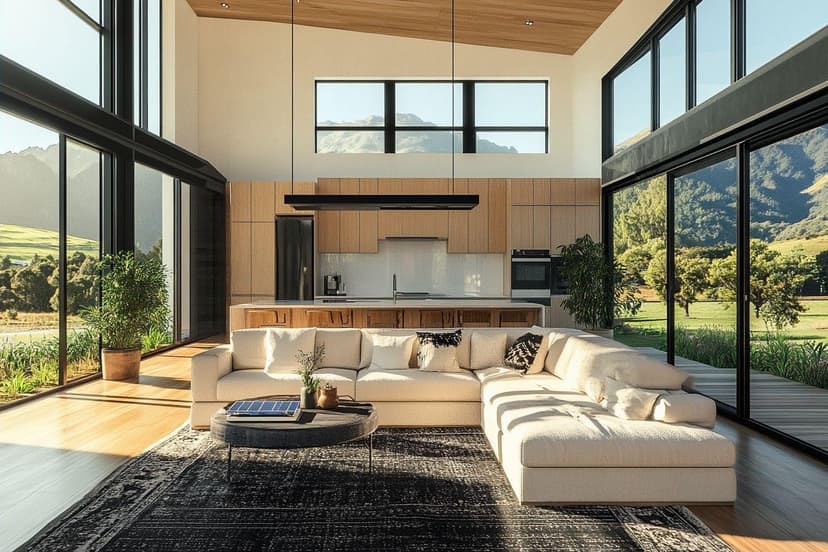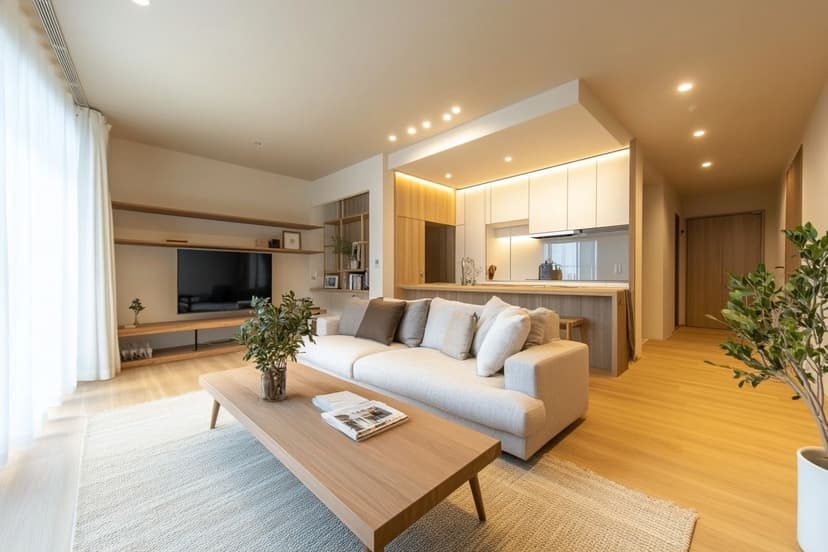2025 Prefabricated Solar Homes for Seniors in New Zealand with Luxury Designs
Sarah Johnson • May 14, 2025 • 5 min
In 2025, seniors in New Zealand seeking comfortable, sustainable, and stylish housing options can explore a growing market of luxury prefabricated homes, many of which can be equipped with solar panels. These prefabricated (prefab) homes combine advanced energy-efficient technology, customizable design, and practical benefits tailored to the lifestyle and needs of senior citizens.

This article provides an overview of options, features, eligibility, benefits, and recent regulatory updates related to luxury 60 square meter prefab solar bungalows for seniors across New Zealand.
Prefabricated Homes as an Option for Seniors in 2025 New Zealand
Prefabricated homes are constructed offsite in controlled factory environments and delivered ready for installation or occupancy. This process often reduces construction times, on-site disruptions, and related stress compared to traditional building methods. For seniors, this can mean faster access to a new home designed to meet specific needs.
By 2025, several providers in New Zealand such as Árbol, Greenhaven Homes, and Absolute Tiny Houses offer prefabricated modular homes designed for the country’s climate and lifestyle. Common features include:
- Insulation levels exceeding New Zealand's building code by around 40%.
- uPVC low-e double glazed windows to help reduce heat loss and noise.
- Mechanical Ventilation Heat Recovery systems to support indoor air quality.
- Customizable layouts including bungalows and compact designs for standalone or secondary dwellings.
- Options for foundations or trailers to support mobility when required.
Energy Efficiency and Integration of Solar Panels
Luxury prefab homes for seniors in 2025 in New Zealand often focus on sustainability and energy efficiency. Though listings for 60m² prefab homes specifically including integrated solar panels may not be widespread, many manufacturers facilitate the installation of solar photovoltaic (PV) systems and off-grid power options.
For example:
- Árbol Homes employ high levels of insulation (R3.8 to R7 underfloor insulation, compared to the government code minimum of R1.3) and heat recovery technology designed to support comfort while potentially lowering energy use.
- Absolute Tiny Houses promote off-grid living possibilities, indicating compatibility with solar installations, suited for seniors interested in sustainable living.
- Greenhaven Homes offer architect-designed, transportable homes with on-grid and off-grid capabilities suitable for smaller footprints like 60 square meters.
Incorporating solar panels may help reduce electricity consumption and environmental impact, which can be relevant considerations for seniors managing fixed budgets or seeking greater energy independence.
Design Features and Customization Available
Prefab homes for seniors in 2025 offer various finishes and design options aimed at improving comfort and usability. These features can include:
- Bathrooms designed with accessibility and ease of use in mind.
- Kitchens equipped with energy-efficient appliances and LED lighting.
- Floor plans supporting mobility aids and open movement.
- Use of durable, natural materials that promote a healthy indoor environment.
- Options for private outdoor spaces such as decks or covered areas.
- Smart home technologies supporting safety, lighting, and temperature control.
Providers like Árbol and Absolute Tiny Houses offer customization within design and budget frameworks. Seniors can select from different sizes and layouts based on personal preferences and requirements.
Options for Placement and Mobility
One aspect of many luxury prefab homes in New Zealand is their flexible placement options:
- Trailer-Based Homes: Some providers, such as Absolute Tiny Houses, offer homes delivered on trailers. These homes may be classified as caravans if they conform to size regulations, enabling mobility and temporary placement without some building code constraints.
- Permanent Foundations: Homes can also be installed on foundations, complying with local building regulations while retaining faster construction compared to traditional homes.
- Transition Options: Some residents may begin with trailer placement and later move the home onto a foundation, adapting as their needs evolve.
This flexibility can accommodate different senior living arrangements, from downsizing options to longer-term retirement houses.
Regulatory Framework Affecting Prefab Homes for Seniors
Recent amendments to New Zealand’s Building Act allow minor dwellings (such as secondary units or granny flats) up to 70 square meters to be built without requiring building consent, under specified conditions. This change simplifies processes for homeowners interested in adding secondary residences.
Key points include:
- No building consent required for minor dwellings up to 70m² under specific criteria.
- Encouragement of prefabricated homes as compliant secondary units.
- Possibility for combined on-site care and independent living options.
- Potential to add value through compliant modular structures.
These regulatory updates aim to improve accessibility and affordability for suitable housing options, including prefab solar homes aligned with sustainable housing initiatives.

Practical Benefits for Senior Living
Prefabricated homes address several priorities often valued by seniors:
- Use of durable materials and quality control can reduce maintenance needs.
- Faster construction timelines may lower the time between planning and moving in.
- Costs tend to be competitive compared with traditional building methods.
- Environmentally designed homes may appeal to seniors interested in reducing carbon footprints.
- Enhanced insulation and ventilation contribute to comfort and safety throughout the year.
Together, these factors support seniors looking for functional, affordable, and sustainable living solutions in New Zealand.
Approaches to Exploring Luxury Prefab Solar Homes in New Zealand
While consolidated listings of 60m² luxury prefab solar homes for seniors are not commonly available, interested individuals can consider the following steps:
- Contact prefab home manufacturers like Árbol, Greenhaven Homes, and Absolute Tiny Houses for consultation on designs, customization, pricing, and solar integration options.
- Review transportable and fixed installation alternatives.
- Understand local council regulations and land use rules relevant to their property.
- Seek advice on financial options and potential subsidies related to sustainable housing initiatives.
Consulting with manufacturers and specialists can help seniors and families align their housing choices with personal needs, budget, and the features available in 2025.
Summary
In 2025, luxury prefabricated solar homes designed with seniors in mind represent an available housing option in New Zealand. These homes offer energy-efficient design, environmentally friendly materials, and customization choices, supported by regulatory changes easing the process for minor dwellings. Providers offer modular designs with solar compatibility and flexible installation methods suited to different living preferences. Seniors interested in combining comfort, independence, and sustainability may find value in exploring available prefab home options.
Sources
Disclaimer: All content, including text, graphics, images and information, contained on or available through this web site is for general information purposes only. The information and materials contained in these pages and the terms, conditions and descriptions that appear, are subject to change without notice.